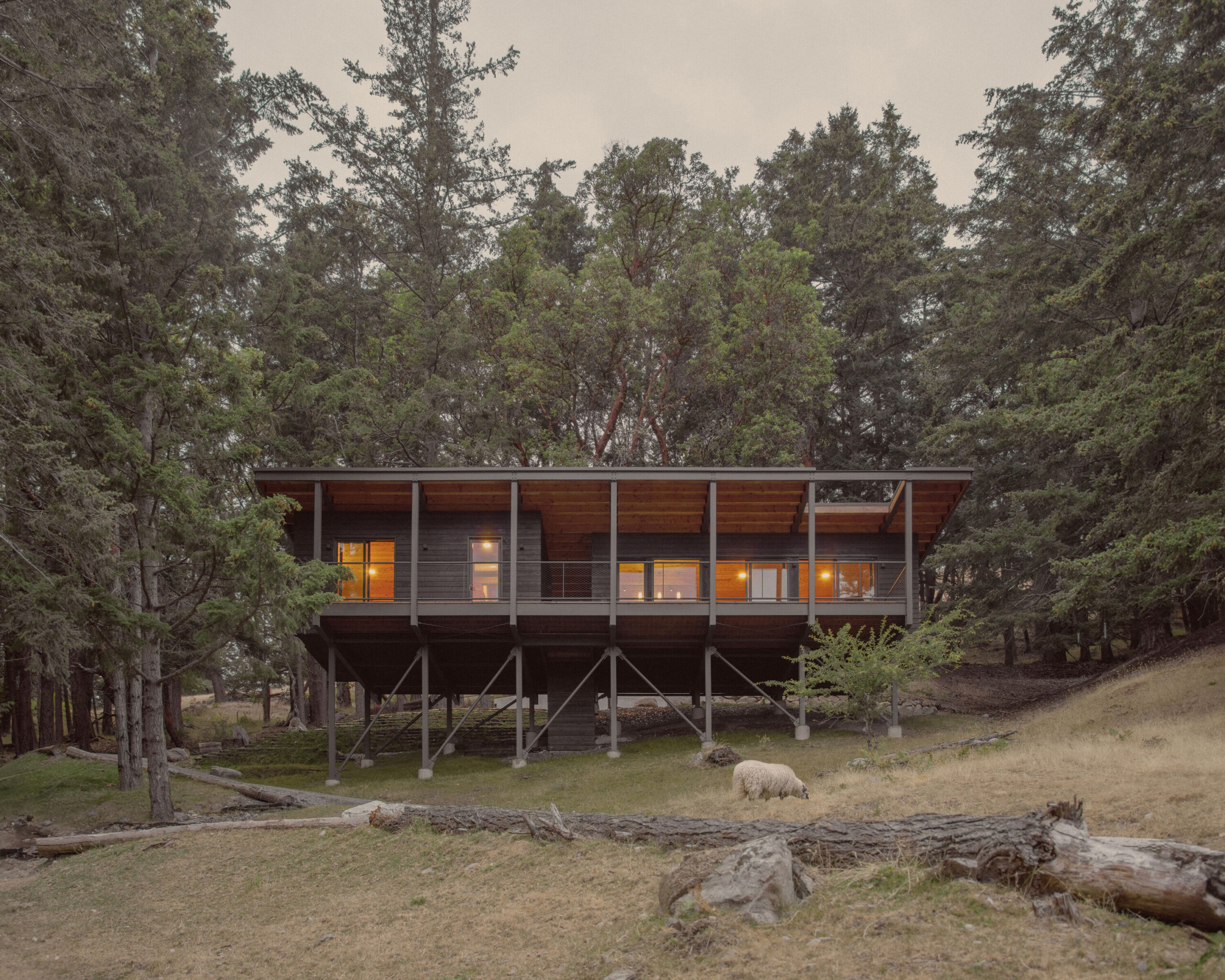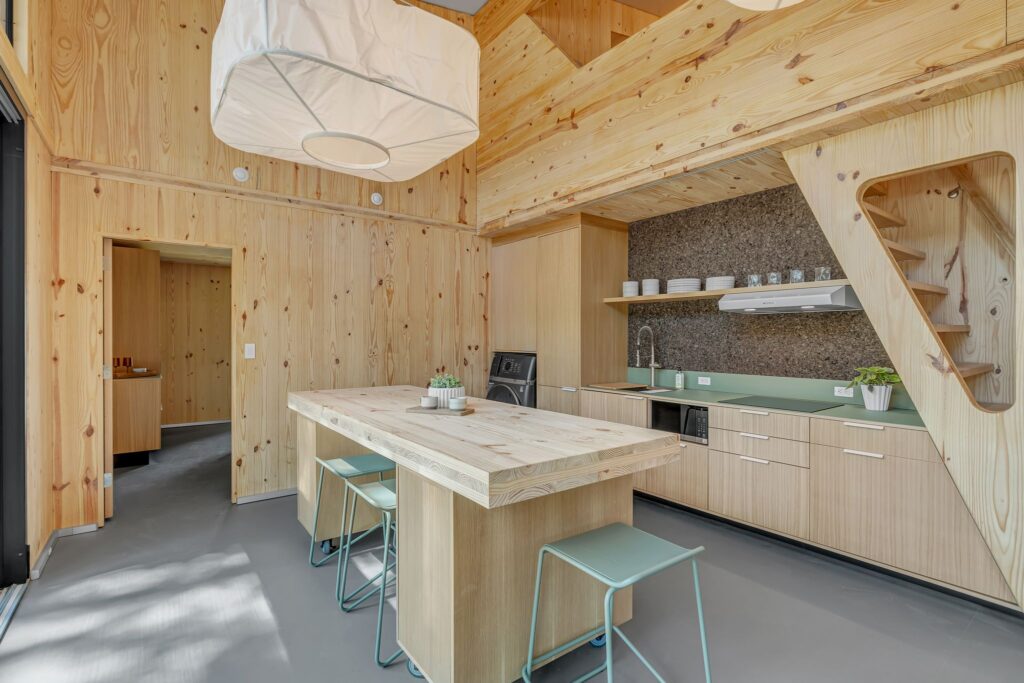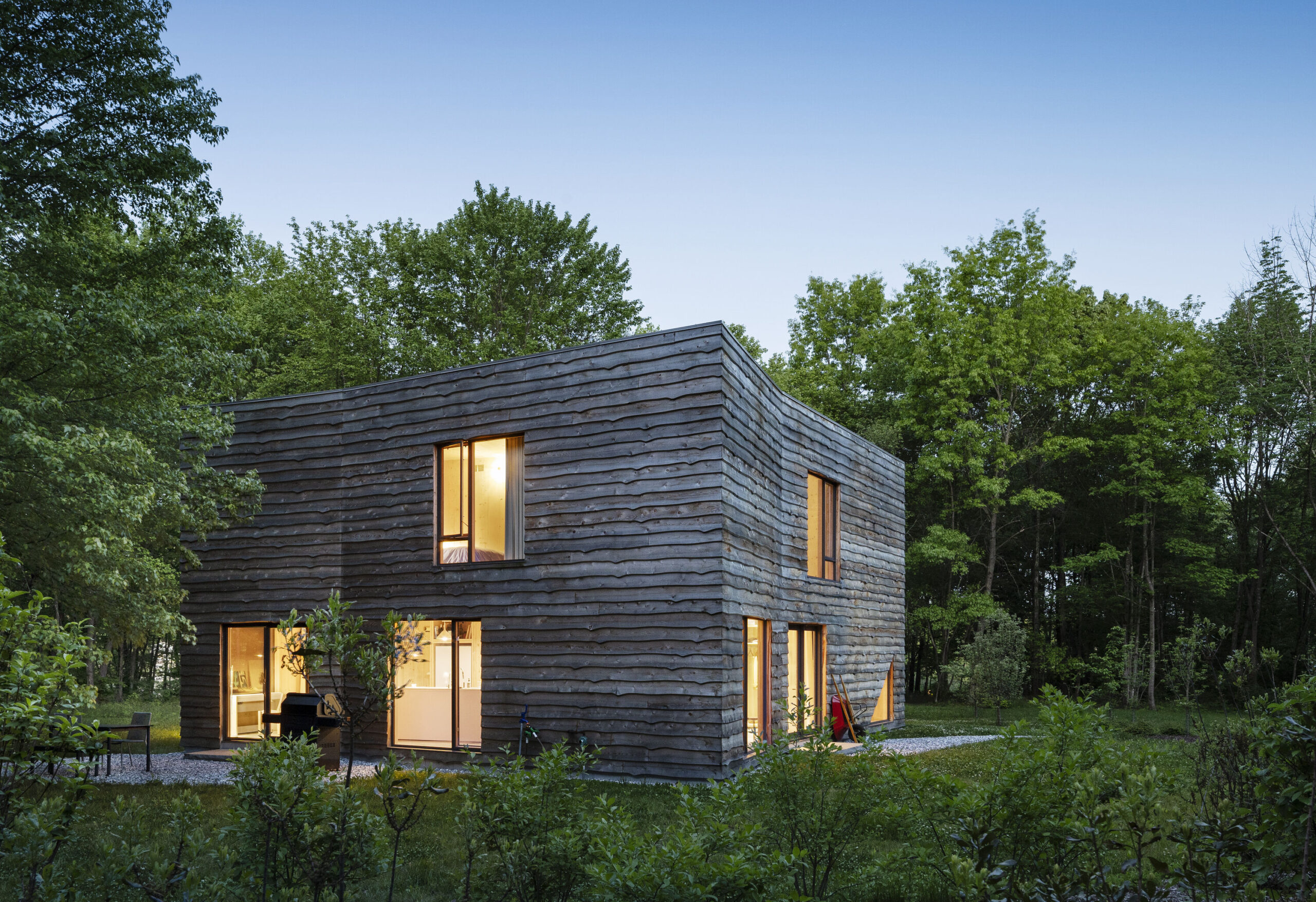Single-Family Home
Carbon-Negative Home Goes All-Natural With Mass Timber and Renewable Materials
When Greg Esparza, Austin-based architect and cofounder of design-build firm Moontower, decided to build a toxin-free, natural demonstration home, he turned to cross-laminated timber (CLT) and other organic materials in place of concrete, conventional wall assemblies, plastics, insulations, or drywall. The result is an energy-efficient, 1,000 square-foot, two-bed, two-bath home that not only wraps occupants in wooden warmth, but is also carbon-negative, avoiding 19,000+ kilograms of carbon emissions.
Climate-Driven, Plant-Based
CLT Construction
“If eco-conscious, natural food advocate Michael Pollan says ‘Eat food, not too much, mostly plants’,” Esparza says, “then as builders and architects, perhaps we should take a similar approach: Build with real, naturally renewable materials, not too many, mostly plants.”
That’s the philosophy behind Cross Cabin, the experimental demonstration home constructed entirely of cross-laminated timber (CLT). Its roof is insulated with hemp and wood fiber, and its exterior is clad in a thermally modified cork. The project is built on a concrete-free steel foundation and uses no paint, drywall, foam, or fiberglass insulation—essentially eliminating most artificial materials and plastics.
Esparza worked closely with his structural engineer Apex to maximize the efficiency of the CLT, using five-ply CLT floor panels and three-ply CLT roof panels that span eighteen feet. Built on top of a steel wide flange and helical pile foundation, the structural design accommodates cantilevering roof and floor panels.

Cross Cabin
“I wanted to build a home that was bold in its design while putting climate and carbon first,” Esparza says. “It’s about reducing non-renewable, mineral-intensive materials and simplifying what goes into the dwelling. In this case, the CLT is doing much of the heavy lifting acting as the structure, including the framing, wallboard, flooring, and serving as part of the insulation. The cork cladding acts like a protective bark—much like that of a tree.”
Esparza crunched the net project emissions using the BEAM estimator and, when factoring in the home’s timber and plant-based carbon storage benefits, the project went beyond carbon neutral. By his calculations, the project achieves a carbon footprint of negative 19,592 kg of CO2 as compared to a positive 27,369 kg of carbon equivalent emissions for a typical slab-on-grade approach for a similarly sized structure that uses spray foam insulation, fiber cement siding, and drywall.

Cross Cabin

Cross Cabin
Biophilic Abode: Enveloped in Exposed
Natural Wood
The modest but welcoming home features exposed timber throughout, and the spruce and Douglas-fir slabs are treated with nothing more than linseed oil. Inspired by Scandinavian and Japanese residential design, Esparza’s two-story open floor plan design feels like a biophilic tree house for adults.
“What the pictures of this home can’t fully convey is the positive impact of the exposed timber,” he says. “In this space, the first thing everyone notices is the incredible smell of the wood; it’s really something special. Everywhere you turn, it’s at your fingertips. It feels good to touch—way different from conventional drywall.”
Upon entering the main north-facing entry, occupants are greeted by a double-height open-air kitchen and living space. A west-facing built-in daybed/picture window bed makes clever use of the CLT slabs. The primary bedroom on the first floor faces north and gets indirect natural light through floor-to-ceiling windows. Kitchen and dining table countertops, made of laminated recycled paper, punctuate the otherwise all-wood interiors with a punch of black.

Cross Cabin
A bedroom on the second floor is adjacent to a loft den overlooking the double-height living space below. A skylight draws in ample sunlight, eliminating the need for artificial lighting during the day. Discrete built-ins blend with the CLT panels, reducing the need for free-standing furniture. Additionally, the expansive CLT roof shelters a generous back porch conducive to year-round outdoor living.
“Along with the comforting smell of wood, the ample use of timber combined with the natural light—it’s nothing like what you’re used to,” Esparza says. “The light bounces off the wood in a way that changes the whole vibe of the home. It’s just a more natural, comforting place to be.”

Cross Cabin
A Replicable Model for a
Plant-Based Wood Future
Doing more with less, and keeping the footprint modest, lends to the home’s relatively affordable price tag—total construction and installation costs were just under $430,000. And with much of the home prefabricated and fitting together like Legos, the residence has become a replicable prototype for future projects.
To help make this a reality, in addition to his primary design-build firm, Esparza has founded Cross Cabin Build and Supply. The company serves as a distributor of many of the products he used to build the house and looks to develop prototypes that may eventually be built as a kit of parts.
“We’re working on three more prototype projects, taking inspiration from this first one—and taking lessons from nature itself,” Esparza says. “My next step is to put solar on the house, so while the interior and exterior look like a tree, the roof can start working like a leaf. Then we can tell our friends we really live in a tree house.”

Cross Cabin
Project Details
- Project Name:
- Cross Cabin
- Location:
- Austin, TX
- Architect & Builder:
- Structural Engineer:
- Type:
- Size:
- 1,000 square feet
- Timber Products:












